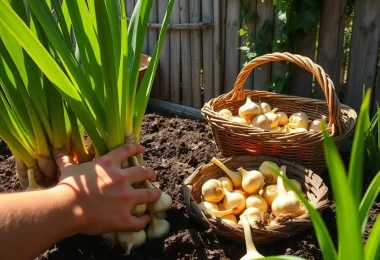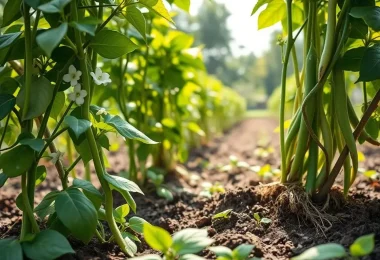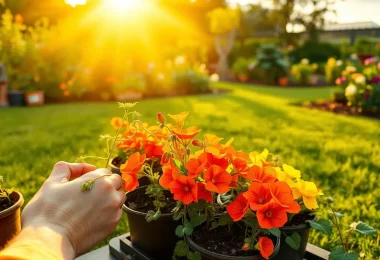I remember the first time I saw Scotch Bonnet peppers. It was at a Caribbean market, filled with exotic smells and lively vendors. The peppers stood out with their bright orange color and unique shape.
These peppers quickly became a favorite in my cooking. They add a mix of sweet and spicy flavors. Their heat is intense, making them a thrilling ingredient to use.
In this guide, we’ll explore the world of Scotch Bonnet peppers. We’ll look at their origins, taste, and how they can spice up your dishes. Whether you love spices or just want to try something new, get ready for a flavorful adventure.
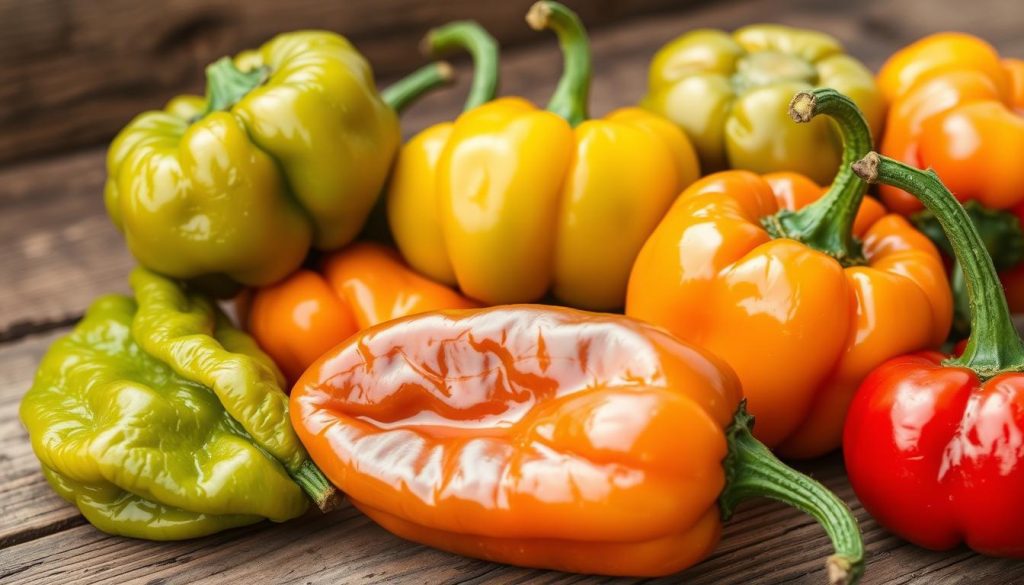
Key Takeaways
- Scotch Bonnet peppers are a Caribbean staple, known for their distinctive bonneted shape and fiery heat.
- These peppers boast a complex flavor profile that combines fruity, floral, and earthy notes with a searing heat.
- Scotch Bonnets are a versatile ingredient, commonly used in Caribbean and Latin American cuisines to add depth and complexity to dishes.
- Compared to their close relative, the habanero pepper, Scotch Bonnets offer a slightly different heat profile and flavor nuances.
- Proper handling and storage are crucial when working with Scotch Bonnet peppers to ensure safety and preserve their unique qualities.
What is a Scotch Bonnet Pepper?
Scotch bonnet peppers come from the Caribbean, especially Jamaica. They are known for their unique “bonnet” shape and bright colors. These colors range from yellow to orange and deep red. Their thick skin and fruity taste make them stand out.
Origin and History
The scotch bonnet pepper has a long history in the Caribbean. They were brought to Jamaica by the Spaniards. Now, they are a key part of the island’s food.
Appearance and Characteristics
Scotch bonnet peppers are easy to spot because of their rounded shape. Their thick skin and vibrant colors make them look unique. They pack a lot of heat and taste fruity and smoky.
“The scotch bonnet pepper is a true Caribbean icon, with a flavor and heat that is distinctly its own.”
Scotch Bonnet Heat Level
Scotch bonnet peppers are known for their intense heat. They are a favorite among chili lovers. These peppers have a Scoville Scale rating of 100,000 to 350,000 Scoville Heat Units (SHU). This makes them as hot as habanero peppers, placing them among the world’s hottest.
Scoville Scale Rating
The Scoville Scale measures the spiciness of chili peppers. It was created by Wilbur Scoville in the early 1900s. The scale goes from 0 (no heat) to 16,000,000 (pure capsaicin).
Scotch bonnet peppers are very hot, with a rating of 100,000 to 350,000 SHU. They are much hotter than bell peppers (0-100 SHU) and jalapeños (2,500-8,000 SHU). The heat comes from capsaicin, the compound that causes the burning feeling.
| Pepper Variety | Scoville Heat Units (SHU) |
|---|---|
| Bell Pepper | 0-100 SHU |
| Jalapeño | 2,500-8,000 SHU |
| Scotch Bonnet | 100,000-350,000 SHU |
| Habanero | 100,000-350,000 SHU |
The Scoville rating of a Scotch bonnet pepper can change. It depends on growing conditions, climate, and the plant itself. But, their heat level is always high. So, they should be used carefully, especially for those who don’t like spicy food.
related: Planting Habanero Peppers: Essential Care and Growing Tips
Flavor Profile of Scotch Bonnet Peppers
Scotch bonnet peppers are famous for their fiery heat and complex flavor. They have a fruity, almost sweet taste, with hints of citrus like orange or grapefruit. This mix of flavors makes them a favorite in Caribbean and Latin American cooking.
Their flavor is a perfect mix of heat and sweetness. Even though they’re hot, their fruity taste balances out the heat. This makes them great for adding depth to dishes, from Caribbean salsas to spicy jerk marinades.
Scotch bonnet peppers also have hints of floral or earthy notes. This variety of flavors lets them work well with many ingredients. They’re a key ingredient in many recipes, adding a unique touch.
“Scotch bonnet peppers are the essence of Caribbean cuisine, with their perfect balance of heat and fruity sweetness.”
If you want to add heat and flavor to your dishes, Scotch bonnet peppers are essential. They’re perfect for exploring the bold tastes of the Caribbean.
Growing Scotch Bonnet Peppers
To grow Scotch bonnet peppers, you need the right climate and care. These peppers love warm, sunny places with good drainage. Keeping the soil moist and warm is key for their growth.
Climate Requirements
Scotch bonnet peppers come from the Caribbean. They do best in warm, sunny spots. They need soil that drains well and is rich in nutrients.
Planting and Care
- Start Scotch bonnet pepper seeds indoors 8-10 weeks before the last frost.
- Move seedlings outside when it’s safe, spacing them 18-24 inches apart.
- Water them often, but make sure the soil isn’t too wet.
- Use a trellis or cage to help them grow up.
- Fertilize every 4-6 weeks with a balanced fertilizer.
- Prune them to keep them bushy and promote more fruit.
By following these steps, you can grow lots of tasty Scotch bonnet peppers at home.
Culinary Uses of Scotch Bonnet Peppers
Scotch bonnet peppers add a Caribbean twist to many dishes. They are key in Latin American and Caribbean cooking. These peppers bring a unique flavor that makes food stand out.
Caribbean and Latin American Cuisine
In the Caribbean and Latin America, scotch bonnet peppers are essential. They add heat and a fruity taste to many recipes. This is seen in Jamaican jerk seasoning and Trinidadian pepper sauces.
They are used in marinades and rubs for meats, seafood, and veggies. This gives them a bold, spicy flavor. They also work well in salsas, chutneys, and even desserts, balancing sweet and spicy.
“Scotch bonnet peppers are the heart and soul of Caribbean cuisine. They add an unparalleled depth of flavor that simply can’t be replicated by any other pepper.”
In stews and braises, scotch bonnet peppers add a deep, complex heat. This heat complements the rich flavors of the dish. Their fruity taste also pairs well with tropical fruits, making them great in salsas and chutneys.
Whether used fresh, roasted, or in sauces, scotch bonnet peppers are vital. They are a key part of the Caribbean and Latin American culinary traditions.
Substitutes for Scotch Bonnet Peppers
When scotch bonnet peppers are hard to find, there are good alternatives. The habanero pepper is a great choice because it has a similar heat and taste.
Red or yellow bell peppers can also work, offering a milder heat and a fruity taste. Serrano peppers are another option, bringing a spicy kick. While they won’t exactly match scotch bonnets, they can still make your dishes exciting.
| Pepper Variety | Scoville Heat Units (SHU) | Flavor Profile |
|---|---|---|
| Scotch Bonnet | 100,000 – 350,000 SHU | Fruity, Slightly Sweet, Floral |
| Habanero | 100,000 – 350,000 SHU | Fruity, Citrusy, Slightly Smoky |
| Serrano | 10,000 – 23,000 SHU | Slightly Herbaceous, Grassy |
| Bell Pepper | 0 – 500 SHU | Mild, Sweet, Crunchy |
When using a scotch bonnet pepper substitute, think about the heat and taste. This will help you get a dish that’s balanced and tasty. Try out different options to find the best one for your recipes.
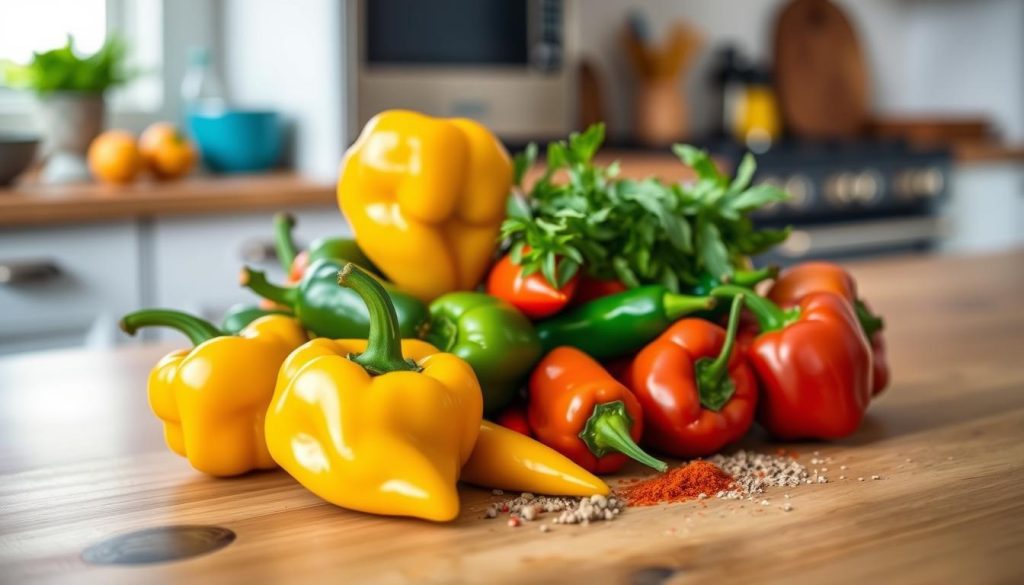
Scotch Bonnet vs. Habanero Peppers
Scotch bonnet and habanero peppers are known for their intense heat and fruity taste. Yet, they have some key differences. Knowing these can help you pick the perfect pepper for your cooking.
Heat Level Comparison
Scotch bonnets usually have a higher Scoville Heat Unit (SHU) rating. They range from 100,000 to 350,000 SHU. Habaneros also have a similar range, from 100,000 to 350,000 SHU. Both are great for adding a strong heat to your food.
Flavor Differences
Scotch bonnets often taste like citrus or tropical fruits. Habaneros have a more earthy, nutty flavor. This flavor difference can greatly affect your dish’s taste.
Whether you like the bright taste of scotch bonnets or the complex flavors of habaneros, both can make your food better. Try them out to see which one you prefer.
Handling and Storing Scotch Bonnet Peppers
Working with scotch bonnet peppers requires careful handling and storage. These peppers can irritate your skin if not handled right. It’s wise to wear gloves to protect your skin.
To keep scotch bonnet peppers fresh and flavorful, store them in the fridge. Use a sealed container or bag. This keeps their unique taste and prevents them from drying out.
Proper Handling Techniques
- Wear gloves when handling scotch bonnet peppers to avoid skin irritation.
- Avoid touching your face or eyes after handling the peppers, as the capsaicin can cause a burning sensation.
- Wash your hands thoroughly with soap and water after handling scotch bonnet peppers.
Optimal Storage Conditions
- Store scotch bonnet peppers in the refrigerator in a sealed container or bag.
- This helps maintain the peppers’ freshness and preserves their unique flavor profile.
- Avoid leaving scotch bonnet peppers at room temperature for extended periods, as this can cause them to lose their potency and aroma.
| Handling and Storage Tips | Explanation |
|---|---|
| Wear Gloves | Helps prevent skin irritation and discomfort |
| Refrigerate in Sealed Container | Preserves freshness and flavor of scotch bonnet peppers |
| Avoid Prolonged Room Temperature | Can cause loss of potency and aroma |
By following these simple guidelines, you can keep your scotch bonnet peppers fresh and flavorful. This ensures they’re ready for your next culinary adventure.
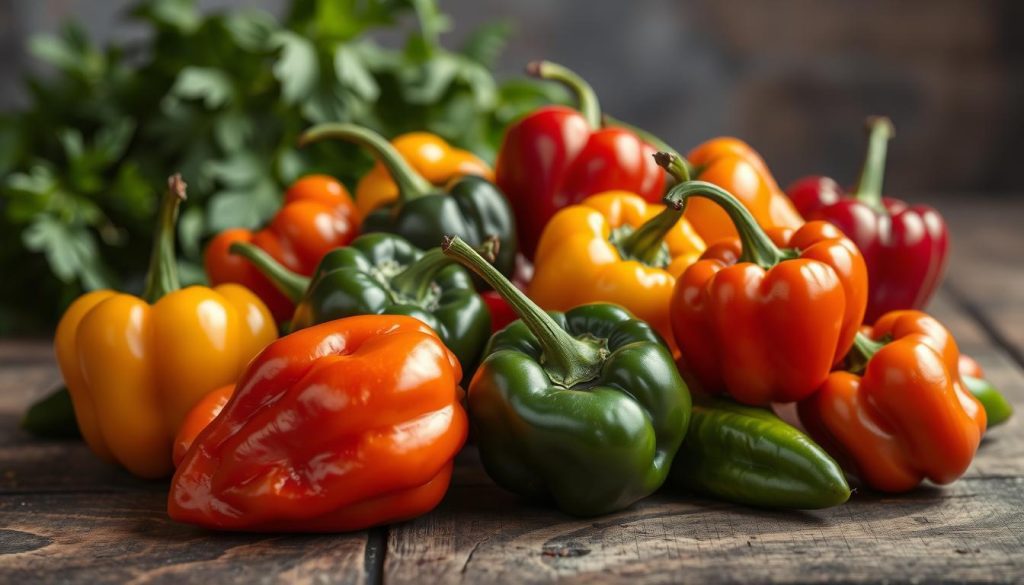
Health Benefits of Scotch Bonnet Peppers
Scotch bonnet peppers are known for their fiery heat and unique flavor. They also have impressive health benefits. These vibrant peppers are full of essential vitamins, minerals, and antioxidants.
Nutritional Value
Scotch bonnet peppers are rich in vitamins A and C, and vitamin B6. They also have potassium, iron, and magnesium. Plus, they’re full of antioxidants and anti-inflammatory compounds like capsaicin.
Capsaicin, the heat in Scotch bonnet peppers, has many health benefits. It may help improve metabolism, relieve pain, and fight cancer.
| Nutrient | Amount per 100g |
|---|---|
| Vitamin A | 4,500 IU |
| Vitamin C | 52.4 mg |
| Vitamin B6 | 0.4 mg |
| Potassium | 238 mg |
| Iron | 1.2 mg |
| Magnesium | 16 mg |
Adding scotch bonnet peppers to your diet can boost your nutrient intake. They’re great for spicing up meals and adding variety to your kitchen.
Popular Scotch Bonnet Pepper Dishes
Scotch bonnet peppers add a unique flavor and fiery kick to many dishes. They are key in Caribbean and Latin American cooking. These peppers make both savory and spicy recipes more exciting.
Jamaican jerk chicken is famous for using scotch bonnet peppers. It mixes the peppers’ heat with aromatic spices for a memorable taste. Trinidadian callaloo is another favorite, with leafy greens, coconut milk, and scotch bonnet peppers.
Guyanese pepper pot highlights scotch bonnet peppers’ versatility. It’s a hearty stew with meats, vegetables, and scotch bonnet peppers for a bold flavor. Haitian pikliz, a spicy cabbage slaw, also uses scotch bonnet peppers for a tasty side dish or condiment.
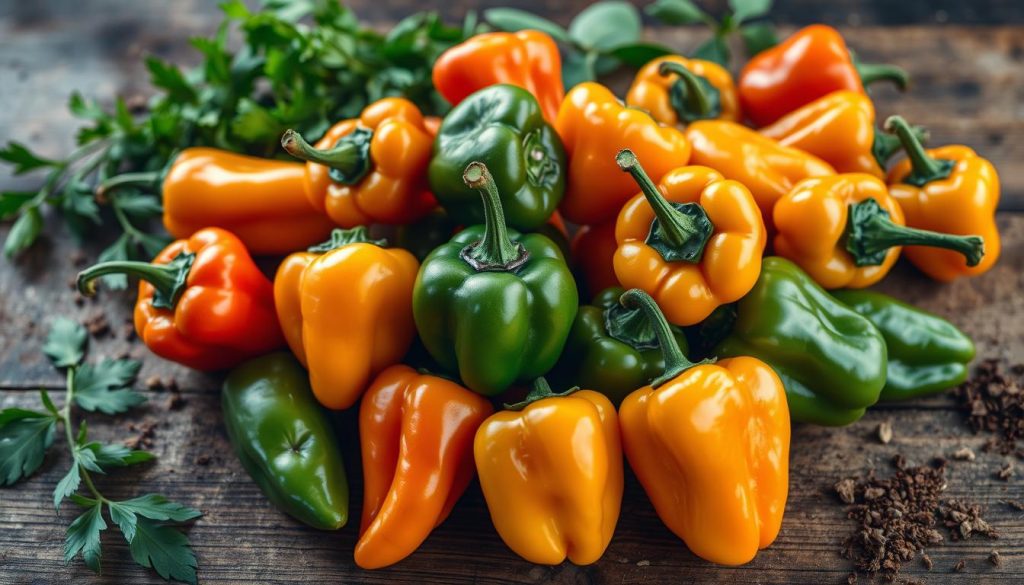
Looking to spice up your cooking? Scotch bonnet peppers are a great choice. They add a fiery kick to many dishes, from jerk chicken to callaloo and more. These peppers are the stars of many beloved regional dishes.
Where to Buy Scotch Bonnet Peppers
Scotch bonnet peppers bring a Caribbean flavor and a fiery kick to dishes. You can find them in local markets and online. They’re perfect for adding spice to your cooking or trying new recipes.
Local Markets and Grocers
In places with Caribbean or Latin American communities, scotch bonnet peppers are easy to find. You can get them fresh, dried, or in condiments. Shopping locally supports small businesses and lets you explore different cuisines.
Online Sources
Online, many retailers sell scotch bonnet peppers if they’re not in local stores. These sites often get their peppers directly from growers. This way, you can get fresh, authentic peppers delivered to your home with just a few clicks.
“Scotch bonnet peppers are a must-have ingredient for anyone who loves bold, Caribbean-inspired flavors. They add an unforgettable punch to jerk chicken, curries, and even salsas.”
Whether you shop online or locally, finding scotch bonnet peppers is easy. They can spice up your cooking and add a unique flavor to your dishes. Try them out and see how they can enhance your meals.
Scotch Bonnet Pepper Festivals and Events
The world of scotch bonnet peppers is full of life and flavor. Festivals and events celebrate these spicy wonders. They offer a chance for fans to dive into the rich culinary history of scotch bonnet peppers.
The Scotch Bonnet Pepper Festival is a big deal in the Caribbean. It shows off the many uses of scotch bonnet peppers. You can see cooking demos, pepper-eating contests, and try all sorts of scotch bonnet products.
The Jamaica Scotch Bonnet Pepper Festival is held in Jamaica. It’s not just about the peppers. You’ll also enjoy music, dances, and Jamaican food.
The International Scotch Bonnet Pepper Festival in the U.S. attracts people from everywhere. It’s packed with workshops, talks, and tastings. You’ll learn a lot about scotch bonnet peppers.
These festivals show how much people love scotch bonnet peppers. They’re a chance to explore new flavors, learn about different cultures, and appreciate this spicy delight.
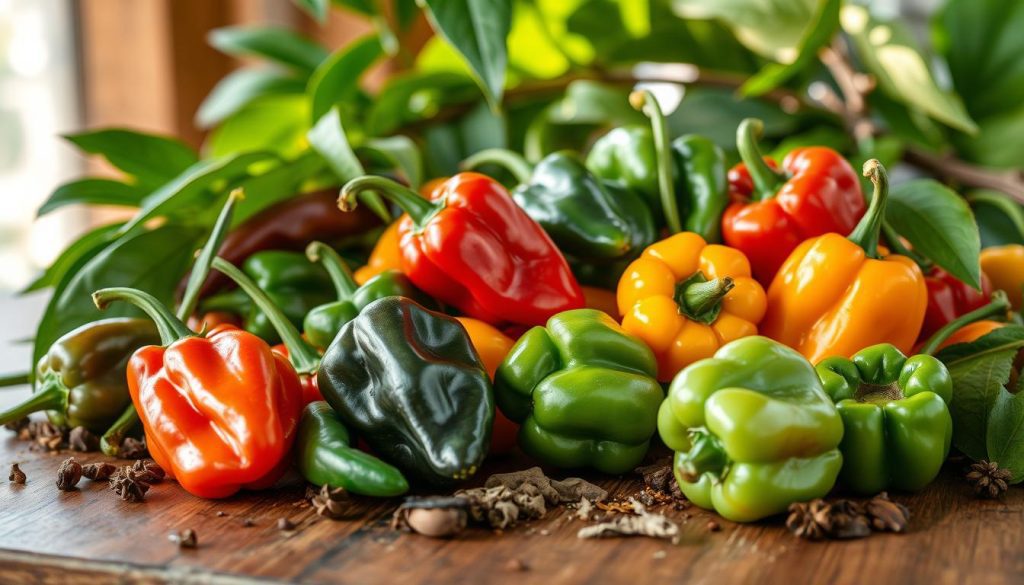
“The scotch bonnet pepper is more than just a spice – it’s a gateway to the vibrant flavors and rich heritage of Caribbean cuisine.”
Scotch Bonnet Pepper Safety and Precautions
Handling scotch bonnet peppers requires caution because of their intense heat. These peppers can irritate your skin and cause discomfort if not handled right. It’s wise to wear gloves when working with scotch bonnet peppers to avoid the burning sensation from capsaicin.
When cooking with scotch bonnet peppers, start with a small amount. Gradually add more to your liking. Too much heat can spoil your meal. Also, be careful not to touch your eyes or face after touching these peppers. The oils can cause a painful reaction.
- Wear gloves when cutting or chopping scotch bonnet peppers to prevent skin irritation.
- Avoid touching your eyes or face after handling scotch bonnet peppers.
- Start with small amounts of scotch bonnet peppers when cooking and gradually increase to find your desired heat level.
| Precaution | Reason |
|---|---|
| Wear gloves when handling scotch bonnet peppers | To prevent skin irritation from the capsaicin compounds |
| Avoid touching eyes or face after handling scotch bonnet peppers | The oils can transfer and cause a painful reaction |
| Start with small amounts of scotch bonnet peppers when cooking | To avoid overwhelming your palate with intense heat |
By taking these precautions, you can enjoy the bold flavors of scotch bonnet peppers safely. This way, you’ll avoid any discomfort or irritation.
Conclusion
Scotch Bonnet peppers have won over the culinary world. They mix fiery heat with complex, fruity flavors. These peppers, from the Caribbean, are now key for those who love spice and adventure in cooking.
Exploring Scotch Bonnet peppers opens up a new world of taste. They’re great in Caribbean dishes, for making unique condiments, or just to add excitement to your cooking. These peppers are a gateway to new flavors and experiences.
Keep exploring with Scotch Bonnet peppers. They’re full of flavor and can make your dishes stand out. Let them guide you to create bold, tasty meals. The world of Scotch Bonnet peppers is waiting for you, so start your culinary adventure today.
FAQ
What is a Scotch Bonnet Pepper?
Scotch Bonnet peppers come from the Caribbean, especially Jamaica. They look like a bonnet and are bright yellow, orange, or red. Their thick skin and fruity taste make them stand out.
What is the heat level of Scotch Bonnet Peppers?
Scotch Bonnets are very hot, with a Scoville Scale rating of 100,000 to 350,000 SHU. They’re as hot as habaneros, making them among the hottest peppers worldwide.
What is the flavor profile of Scotch Bonnet Peppers?
Scotch Bonnets are not just hot; they taste fruity and a bit sweet. They have hints of citrus, like orange or grapefruit. This makes them great in Caribbean and Latin American dishes.
How do you grow Scotch Bonnet Peppers?
Scotch Bonnets love warm, sunny places with good drainage. They need consistent moisture and warmth to grow well. Plant them right, with enough space and nutrient-rich soil, for a healthy plant.
How are Scotch Bonnet Peppers used in cooking?
Scotch Bonnets add heat and flavor to many Caribbean and Latin American dishes. They’re key in Jamaican jerk seasoning and Trinidadian pepper sauces. Use them in marinades, salsas, stews, and more.
What can I use as a substitute for Scotch Bonnet Peppers?
If you can’t find Scotch Bonnets, try habaneros for a similar heat and taste. Red or yellow bell peppers offer a milder heat and fruity taste. Serrano peppers are also a good substitute for their spiciness.
How do Scotch Bonnet Peppers compare to Habanero Peppers?
Scotch Bonnets and habaneros are both hot and fruity, but different. Scotch Bonnets are slightly hotter, with a Scoville rating of 100,000 to 350,000 SHU. They taste more citrusy, while habaneros have a nutty flavor.
What are the health benefits of Scotch Bonnet Peppers?
честные казино с быстрыми выплатами
бездепозитные бонусы казино
играть в лучшем казино на деньги
база казино с бездепозитным бонусом
онлайн казино России
casino oyunu
Scotch Bonnets are not just spicy; they’re also good for you. They’re full of vitamins A, C, and B6, and antioxidants. Capsaicin in them can boost metabolism, relieve pain, and fight cancer.
Where can I buy Scotch Bonnet Peppers?
You can find Scotch Bonnets in local markets, specialty stores, and online. They’re common in Caribbean and Latin American areas. Online, you can get fresh or dried peppers shipped to you.



